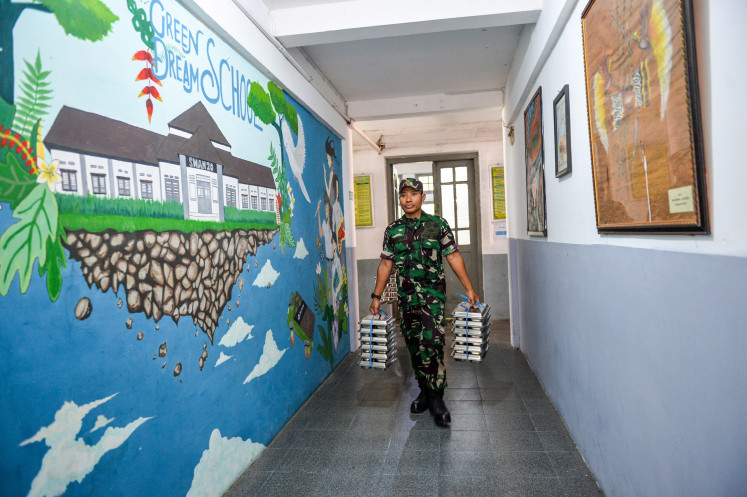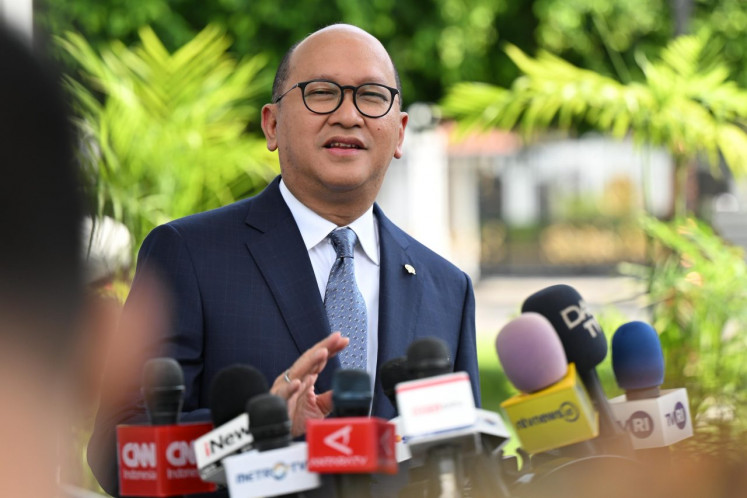Popular Reads
Top Results
Can't find what you're looking for?
View all search resultsPopular Reads
Top Results
Can't find what you're looking for?
View all search resultsDifferentiation in education is not easy
Differentiation has now become a buzzword in education
Change text size
Gift Premium Articles
to Anyone
D
ifferentiation has now become a buzzword in education. More and more teachers nowadays would like to implement differentiated instruction but they are not sure how to do it.
A large body of research suggests that students learn at different rates, have different interests, learning styles and readiness levels. Thus, they need different support systems.
Teachers, however, are finding it complex to apply differentiation, which meets the individual needs of students and provides customized instruction to help them learn. Teacher-education programs in universities have not prepared or equipped teachers well enough to work with diverse groups of learners. Sadly, a number of education graduates did not experience or learn about differentiated instruction in their teacher-preparation programs.
The biggest challenge for teachers is how to cater to an increasingly wide range of student needs, backgrounds, learning preferences and styles. Having more than one student in a class represents different learning needs, strengths and limitations. Socioeconomic factors, family background, culture, language proficiency and even gender can influence student performance.
According to Bill Powell and Ochan Kusuma-Powell, former teachers of International School of Kuala Lumpur, there are four keys to differentiated instruction. These are knowing the students, knowing the curriculum, developing a repertoire of instructional strategies, and keeping it simple and social.
Bill Powell, who also taught at Jakarta International School, and his wife, Ochan, wrote the book Making the Difference: Differentiation in International Schools.
Knowing students, which means knowing how they learn best, their strengths and shortcomings, is not rocket science. Making use of pre-assessments and asking students and their parents to complete learner profile surveys or student analysis instruments are good ways of learning more about each student. Frequent observations and dialogues with students, parents and teachers are other means of getting to know students.
Knowing the curriculum or having a broad knowledge of the concepts that students have to take away from classrooms, however, does not seem to be an easy task for teachers. Many teachers are still struggling identifying what is important for students to know, understand and be able to do. Determining the “teachable concepts or the big ideas” as opposed to “topics to teach” appears to be fairly complex.
The third key – developing a variety of teaching and learning strategies, including flexible grouping techniques – is not at all complicated. Keeping it simple, part of the fourth key, means establishing realistic and manageable objectives and is not difficult to do. However, for some teachers, keeping it social, which refers to collaborating with colleagues in the same grade level, department or subject team, poses a problem.
Time constraints have always been cited as one of the reasons teachers find it hard to collaborate with their professional colleagues. Differentiation involves collaborative planning and reflection but some teachers are bogged down by paperwork or external commitments such as private tutoring to augment their salaries.
Having different personalities is another reason. Just like students, teachers have different characteristics and expectations. Teachers also have various interests and motivations. While there are teachers who are passionate about their profession, there are also teachers who treat teaching merely as a source of income.
The trend toward differentiation in education is in response to the reality that individual learners are not all the same. Thus, they should not be treated by teachers as if they are. The theory of multiple intelligences by psychologist Howard Gardner of the Harvard Graduate School of Education calls for individuation and pluralization.
Individuation requires teachers to present lessons in ways that are compatible with the child’s ways of learning and providing the child the opportunity to demonstrate what he or she has learned and understood. Pluralization, on the other hand, refers to presenting content in multiple ways, not just through lectures that can make students lose interest in the lesson.
With students having different kinds of minds, they should not be assessed using only one assessment tool or strategy. Differentiation entails the use of a range of assessment methods, not just paper and pencil tests designed to measure one type of intelligence. Most assessments cater to the verbal-linguistic intelligence or the mathematical-logical intelligence. Teachers, however, need to remember that there are other kinds of intelligences such as the musical-rhythmic, visual-spatial and bodily kinesthetic intelligences.
Teachers putting differentiation into practice match assessments with students’ different intellectual strengths, interests and learning preferences. They give appropriate levels of challenge for all students, including those who are lagging behind, those who are advanced, and those who are in between. In assessment, teachers may want to give students choices on how they want to present their understanding of the lesson or concepts.
Differentiation is not something new. It is based on best practices in education and puts students at the center of teaching and learning. It lets the learning needs of students direct planning, teaching and assessment.
Although implementing differentiation can be a challenging and daunting task, teachers just have to do it and school leaders and administrators have to support it. Teachers can differentiate through content, process, product or the learning environment. With broad differences in individual students, any education system that treats all children the same is unquestionably unfair.
The writer is the coordinator of the Primary Years Program of Binus International School Simprug.










